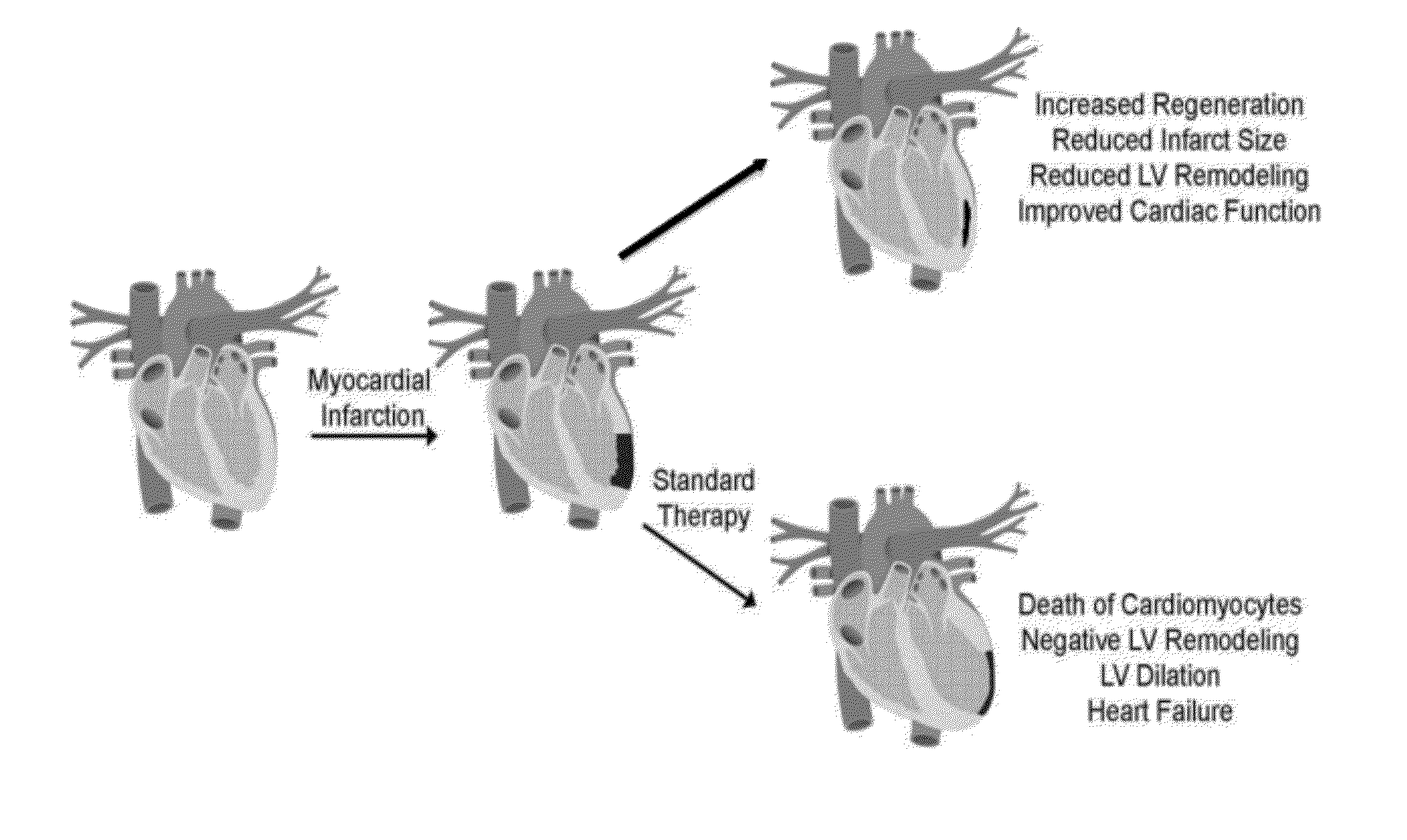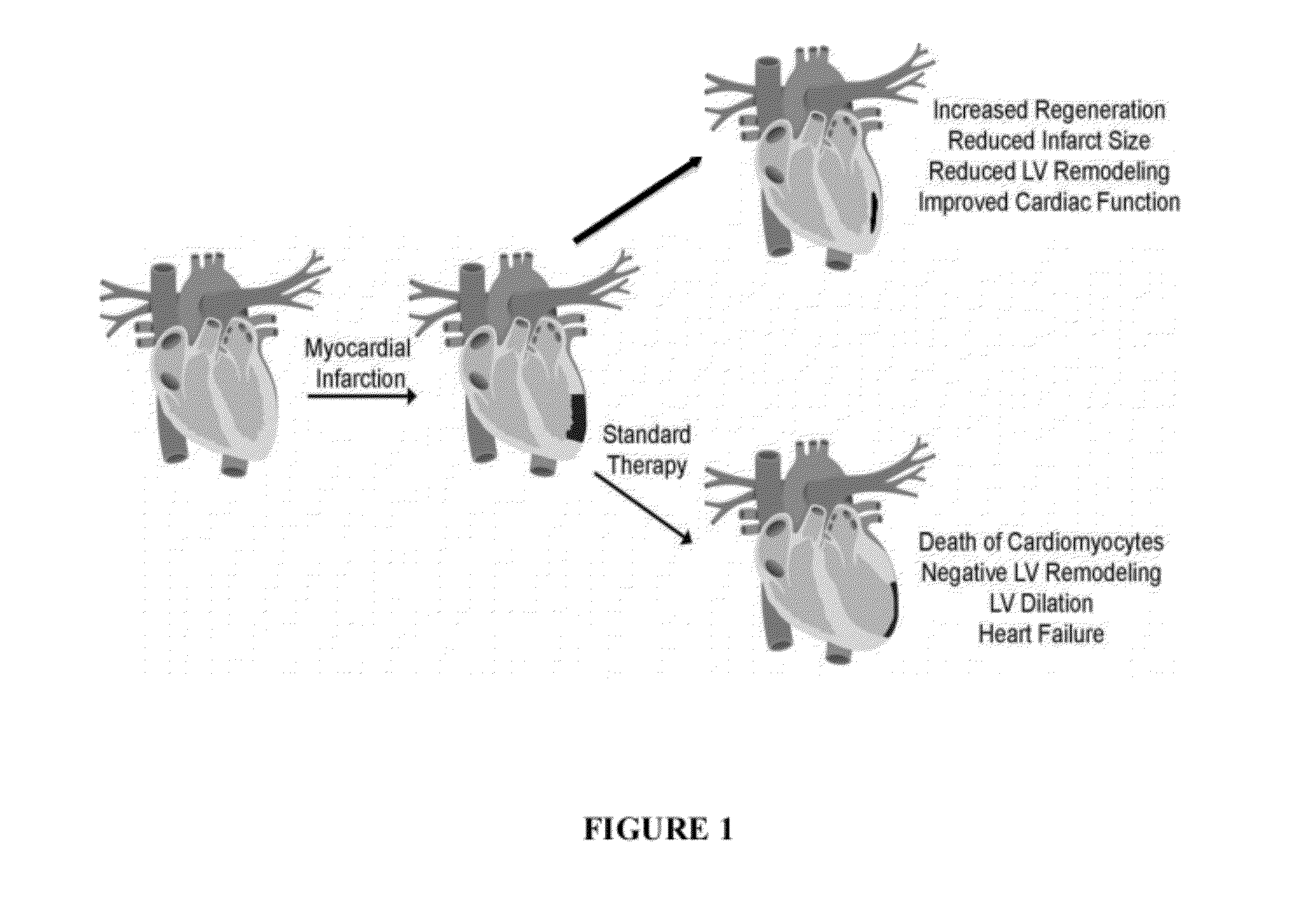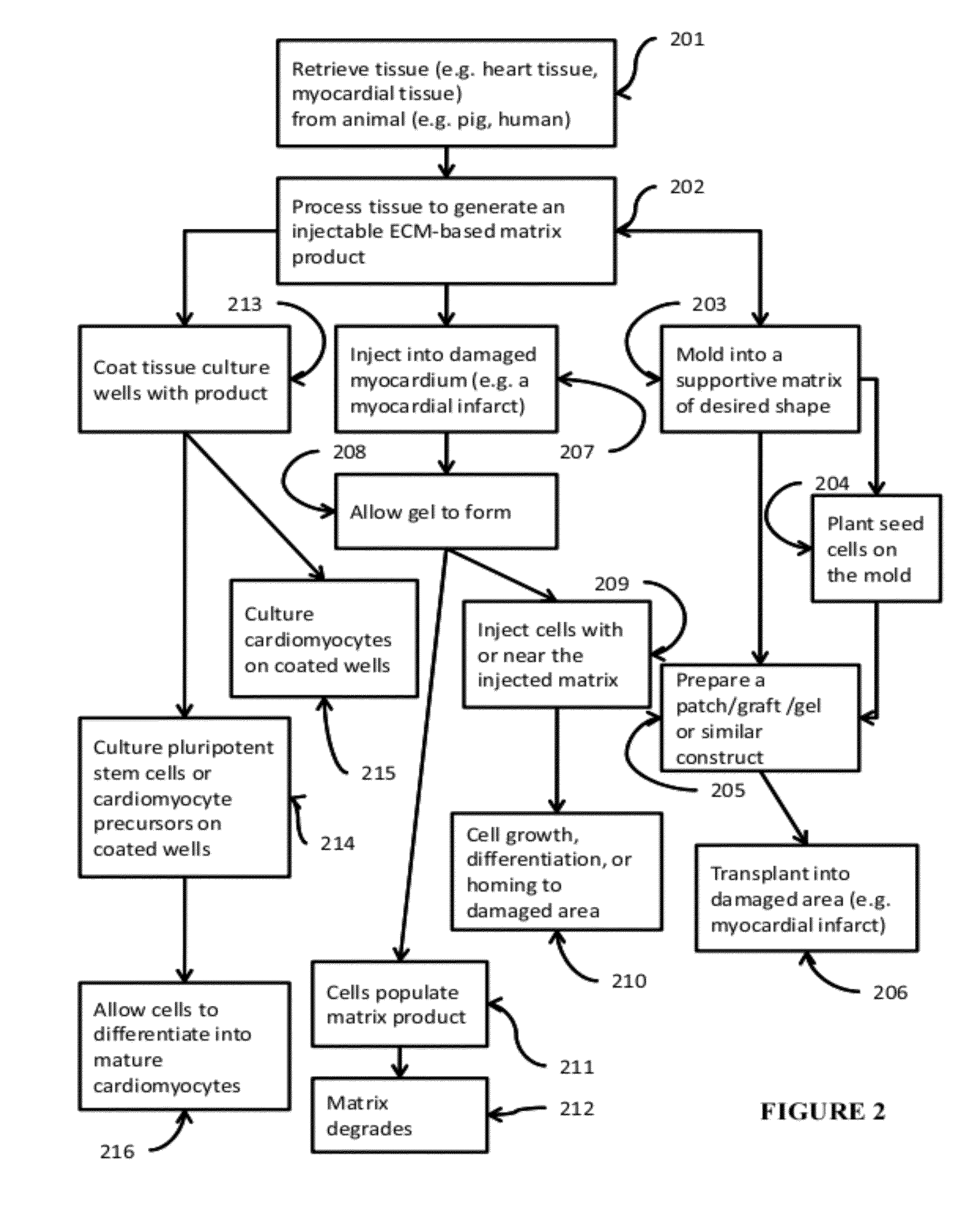Compositions and methods for cardiac therapy
a technology applied in the field of compositions and methods for cardiac therapy, can solve the problems of reducing pumping efficiency, little to repair damaged heart tissue, poor survival in vivo,
- Summary
- Abstract
- Description
- Claims
- Application Information
AI Technical Summary
Benefits of technology
Problems solved by technology
Method used
Image
Examples
example 1
[0115]The objective of this study is to examine the use of a gel as a growth platform for cell adhesion, growth, maturation, and delivery in vivo. It is provided that a gel composed of native heart extracellular matrix tissue can aid in cardiac tissue regeneration by promoting cell survival.
[0116]Female Sprague Dawley rats were euthanized and their hearts decellularized. Decellularized hearts were then lyophilized, rehydrated, pulverized, and lyophilized again to form a dry powder. Frozen hearts were rehydrated with water and then immersed in liquid nitrogen. Once frozen, hearts were systematically crushed within a ball and cup apparatus at 70 psi for 10 seconds. Pulverized heart particulates were then freeze dried. Once dry, lyophilized heart tissue was combined with 1% pepsin and amalgamated with 0.01M HCl to a concentration of 10 mg / mL. Solution was stirred at room temperature for 48 hours to allow for solubilization of the extracellular matrix tissue. After 48 hours, the HCl sol...
example 2
[0120]Here, cell coating use has been investigated for native heart extracellular matrix of adult ventricles that have been decellularized and solubilized. The advantages being that native heart ECM may have more components than traditional cell coatings, and be more readily available for use than pretreatment with other cell types.
[0121]Hearts were removed from Sprague-Dawley rats, and decellularized. The decellularized hearts were lyophilized, rehydrated, and pulverized after freezing in liquid nitrogen. The ECM was then digested in pepsin in 0.1M HCl. After 48 hours of digestion, 0.01 M acetic acid was added to dilute to the final concentration of 1 mg / ml.
[0122]Pepsin digestion of the native heart ECM was run in vertical gel electrophoresis in reducing conditions using dithiothreirol (DTT) and compared against laminin (BD Biosciences), and calf skin collagen (Sigma). Gels were stained with Imperial Protein Stain (Pierce). Native heart ECM can demonstrate a more complex mixture of...
example 3
[0126]Myocardial infarction was induced in rats using a 25 min ischemia-reperfusion model, via occlusion of the left anterior descending artery. At one week post-MI baseline function was calculated from MRI images. Porcine myocardial ECM was decellularized in small pieces, in 1% SDS for several days, followed by a DI rinse overnight, lyophilization and milling to create a powder. Digestion was performed in 0.1 M HCl with pepsin to create a solubilized form of the material.
[0127]Solubilized ECM was brought to pH 7.4 using 1 M NaOH and diluted with PBS to be 6 mg / mL prior to injection. After MI surgery, animals were randomized into two groups and ECM or saline was injected into the LV free wall of female Sprague Dawley rats through a 30 G needle, two weeks after infarction surgery.
[0128]4 weeks after injection surgery (6 weeks post-MI), cardiac function was again assessed using MRI.
[0129]Animals injected with ECM showed preserved function (as evaluated based on ejection fraction) at 6...
PUM
| Property | Measurement | Unit |
|---|---|---|
| Temperature | aaaaa | aaaaa |
| Temperature | aaaaa | aaaaa |
| Time | aaaaa | aaaaa |
Abstract
Description
Claims
Application Information
 Login to View More
Login to View More - R&D
- Intellectual Property
- Life Sciences
- Materials
- Tech Scout
- Unparalleled Data Quality
- Higher Quality Content
- 60% Fewer Hallucinations
Browse by: Latest US Patents, China's latest patents, Technical Efficacy Thesaurus, Application Domain, Technology Topic, Popular Technical Reports.
© 2025 PatSnap. All rights reserved.Legal|Privacy policy|Modern Slavery Act Transparency Statement|Sitemap|About US| Contact US: help@patsnap.com



